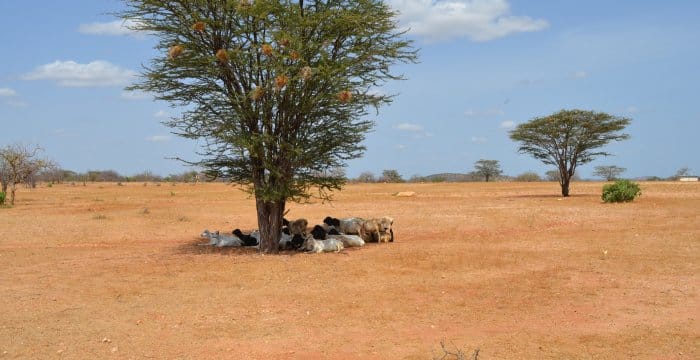Climate change refers to long-term shifts in temperatures and weather patterns. These shifts are mainly caused by human activities such as the burning of fossil fuels like coal, oil, and gas.
Climate change is posing an increasing threat to global socio-economic development and environmental sustainability. Developing countries such as Kenya have been greatly affected due to their low adaptive capacity and high vulnerability to such events.
Climate change has led to more frequent extreme weather conditions like droughts, which last longer than usual, irregular and unpredictable rainfall, flooding, and increasing temperatures. The effects of these climatic changes have made already existing challenges with water security, food security, and economic growth even more difficult.
Due to unreliable rainfall and increased heat, harvests and agricultural production, which account for about 33% of total Gross Domestic Product (GDP), are also at risk. The increased temperatures, rainfall variability in arid and semi-arid areas, and strong winds associated with tropical cyclones have combined to create favourable conditions for the breeding and migration of pests.
Temperatures are expected to increase up to 2.5 degrees Celsius by the year 2050, which may lead to extreme conditions such as floods and drought. Hot and dry conditions in Arid and Semi-Arid Lands (ASALS) make droughts or flooding brought on by extreme weather changes even more dangerous.
Coastal communities are already experiencing sea level rise and associated challenges such as saltwater intrusion. Lake Victoria and Lake Turkana have increased in size over a period of ten years.
According to the National Drought Management Authority, a cash transfer programme known as the Hunger Safety Net Programme has been implemented in eight of the poorest and arid counties, such as Turkana, Garissa, Mandera, Marsabit, Wajir, Tana River, Isiolo, and Samburu, to curb drought that has hit them for the past decade.
In relation, El Niño rains are expected to begin in October and last through December. The Kenyan government has already taken measures to curb the menace by setting aside emergency funds. According to the Meteorological Department of Kenya, some areas are likely to experience floods, and therefore residents living around those areas are encouraged to move to higher ground.
Additionally, the following practices in Kenya have helped in the conservation of the environment: Reduce, reuse, and recycle. Secondly, volunteering in cleanup exercises in the community, conserving water by using less water to avoid wastage, educating individuals on the importance of natural resources, planting more trees, and using non-toxic chemicals and products.
Meanwhile, the government has put up some environmental policies to help prevent global warming. They include the following: formulate strategies to increase tree cover, involve and empower the community in the management of the forest ecosystems.
Under the freshwater and wetland ecosystems, the government will develop and implement integrated freshwater and wetland resources management strategies and action plans, promote and institutionalise payment for environmental services schemes to support catchment protection and conservation, and also develop a national wetland policy and regulations.
Also read: nairobi-countys-chief-of-staff-david-njoroge-flees-out-of-the-country-to-escape-arrest/
The government also seeks to ensure the protection of wetlands, riverbanks, hilltops and slopes from unsustainable practices to prevent soil erosion and environmental degradation, and promote and support eco and organic farming so as to maintain soil fertility. Also, it will develop and implement an Integrated Land User Master (Development) for the Arid and Semi-Arid Lands (ASALS).
Visit our Facebook Page for more news on Rofina media


